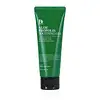What's inside
What's inside
 Key Ingredients
Key Ingredients

 Benefits
Benefits

 Concerns
Concerns

No concerns
 Ingredients Side-by-side
Ingredients Side-by-side

Water
Skin ConditioningDipropylene Glycol
HumectantGlyceryl Stearate
EmollientDisiloxane
Skin ConditioningSorbitan Olivate
EmulsifyingCetyl Ethylhexanoate
EmollientPEG-100 Stearate
Arginine
MaskingCarbomer
Emulsion StabilisingCaprylyl Glycol
EmollientPentylene Glycol
Skin ConditioningHydroxyacetophenone
AntioxidantGlycerin
HumectantPanthenol
Skin ConditioningDehydroxanthan Gum
Emulsion StabilisingSodium Hyaluronate
HumectantSodium Hyaluronate Crosspolymer
HumectantHydrolyzed Hyaluronic Acid
HumectantHyaluronic Acid
HumectantHydrolyzed Sodium Hyaluronate
Skin ConditioningLactobacillus/Soymilk Ferment Filtrate
Skin ConditioningLactobacillus/Rye Flour Ferment
Skin ConditioningBacillus
Skin ConditioningGlycine Soja Extract
Skin ConditioningPropanediol
SolventThiamine Hcl
MaskingRiboflavin
Cosmetic ColorantNiacinamide
SmoothingPantothenic Acid
Skin ConditioningPyridoxine
Skin ConditioningFolic Acid
Skin ConditioningCyanocobalamin
Skin ConditioningOctyldodecanol
EmollientHydrogenated Lecithin
EmulsifyingCeramide NP
Skin ConditioningDisodium EDTA
Ethylhexylglycerin
Skin Conditioning1,2-Hexanediol
Skin ConditioningParfum
MaskingCitronellol
PerfumingGeraniol
PerfumingHexyl Cinnamal
PerfumingWater, Dipropylene Glycol, Glyceryl Stearate, Disiloxane, Sorbitan Olivate, Cetyl Ethylhexanoate, PEG-100 Stearate, Arginine, Carbomer, Caprylyl Glycol, Pentylene Glycol, Hydroxyacetophenone, Glycerin, Panthenol, Dehydroxanthan Gum, Sodium Hyaluronate, Sodium Hyaluronate Crosspolymer, Hydrolyzed Hyaluronic Acid, Hyaluronic Acid, Hydrolyzed Sodium Hyaluronate, Lactobacillus/Soymilk Ferment Filtrate, Lactobacillus/Rye Flour Ferment, Bacillus, Glycine Soja Extract, Propanediol, Thiamine Hcl, Riboflavin, Niacinamide, Pantothenic Acid, Pyridoxine, Folic Acid, Cyanocobalamin, Octyldodecanol, Hydrogenated Lecithin, Ceramide NP, Disodium EDTA, Ethylhexylglycerin, 1,2-Hexanediol, Parfum, Citronellol, Geraniol, Hexyl Cinnamal
Aloe Barbadensis Leaf Juice 80%
Skin ConditioningPropolis Extract
Skin ConditioningPentylene Glycol
Skin ConditioningButylene Glycol
Humectant1,2-Hexanediol
Skin ConditioningGlycerin
HumectantAloe Barbadensis Leaf Extract
EmollientBetaine
HumectantWater
Skin ConditioningPortulaca Oleracea Extract
Skin ConditioningAllantoin
Skin ConditioningHouttuynia Cordata Extract
Skin ConditioningPsidium Guajava Fruit Extract
AstringentSchisandra Chinensis Fruit Extract
Skin ConditioningPerilla Ocymoides Leaf Extract
TonicAcorus Calamus Root Extract
PerfumingCitrus Paradisi Fruit Extract
Skin ConditioningCaprylyl Glycol
EmollientAcrylates/C10-30 Alkyl Acrylate Crosspolymer
Emulsion StabilisingArginine
MaskingAloe Barbadensis Leaf Juice 80%, Propolis Extract, Pentylene Glycol, Butylene Glycol, 1,2-Hexanediol, Glycerin, Aloe Barbadensis Leaf Extract, Betaine, Water, Portulaca Oleracea Extract, Allantoin, Houttuynia Cordata Extract, Psidium Guajava Fruit Extract, Schisandra Chinensis Fruit Extract, Perilla Ocymoides Leaf Extract, Acorus Calamus Root Extract, Citrus Paradisi Fruit Extract, Caprylyl Glycol, Acrylates/C10-30 Alkyl Acrylate Crosspolymer, Arginine
 Reviews
Reviews

Ingredients Explained
These ingredients are found in both products.
Ingredients higher up in an ingredient list are typically present in a larger amount.
1,2-Hexanediol is a synthetic liquid and another multi-functional powerhouse.
It is a:
- Humectant, drawing moisture into the skin
- Emollient, helping to soften skin
- Solvent, dispersing and stabilizing formulas
- Preservative booster, enhancing the antimicrobial activity of other preservatives
Arginine is an amino acid that is important for human development. Your body uses is it to produce hair keratin and skin collagen.
As a cosmetic ingredient, Arginine has antioxidant properties and can also help repair damaged skin. This ingredient is derived either synthetically or from animals.
Arginine isn't fungal acne safe when used in the presence of other lipids (fats, fatty acids, oils, esters, etc). Oils and fats occur naturally within the skin, so take caution when using Arginine if you're prone to fungal acne.
Learn more about ArginineCaprylyl Glycol is a humectant and emollient, meaning it attracts and preserves moisture.
It is a common ingredient in many products, especially those designed to hydrate skin. The primary benefits are retaining moisture, skin softening, and promoting a healthy skin barrier.
Though Caprylyl Glycol is an alcohol derived from fatty acids, it is not the kind that can dry out skin.
This ingredient is also used as a preservative to extend the life of products. It has slight antimicrobial properties.
Learn more about Caprylyl GlycolGlycerin is already naturally found in your skin. It helps moisturize and protect your skin.
A study from 2016 found glycerin to be more effective as a humectant than AHAs and hyaluronic acid.
As a humectant, it helps the skin stay hydrated by pulling moisture to your skin. The low molecular weight of glycerin allows it to pull moisture into the deeper layers of your skin.
Hydrated skin improves your skin barrier; Your skin barrier helps protect against irritants and bacteria.
Glycerin has also been found to have antimicrobial and antiviral properties. Due to these properties, glycerin is often used in wound and burn treatments.
In cosmetics, glycerin is usually derived from plants such as soybean or palm. However, it can also be sourced from animals, such as tallow or animal fat.
This ingredient is organic, colorless, odorless, and non-toxic.
Glycerin is the name for this ingredient in American English. British English uses Glycerol/Glycerine.
Learn more about GlycerinPentylene glycol is typically used within a product to thicken it. It also adds a smooth, soft, and moisturizing feel to the product. It is naturally found in plants such as sugar beets.
The hydrophilic trait of Pentylene Glycol makes it a humectant. As a humectant, Pentylene Glycol helps draw moisture from the air to your skin. This can help keep your skin hydrated.
This property also makes Pentylene Glycol a great texture enhancer. It can also help thicken or stabilize a product.
Pentylene Glycol also acts as a mild preservative and helps to keep a product microbe-free.
Some people may experience mild eye and skin irritation from Pentylene Glycol. We always recommend speaking with a professional about using this ingredient in your routine.
Pentylene Glycol has a low molecular weight and is part of the 1,2-glycol family.
Learn more about Pentylene GlycolWater. It's the most common cosmetic ingredient of all. You'll usually see it at the top of ingredient lists, meaning that it makes up the largest part of the product.
So why is it so popular? Water most often acts as a solvent - this means that it helps dissolve other ingredients into the formulation.
You'll also recognize water as that liquid we all need to stay alive. If you see this, drink a glass of water. Stay hydrated!
Learn more about Water